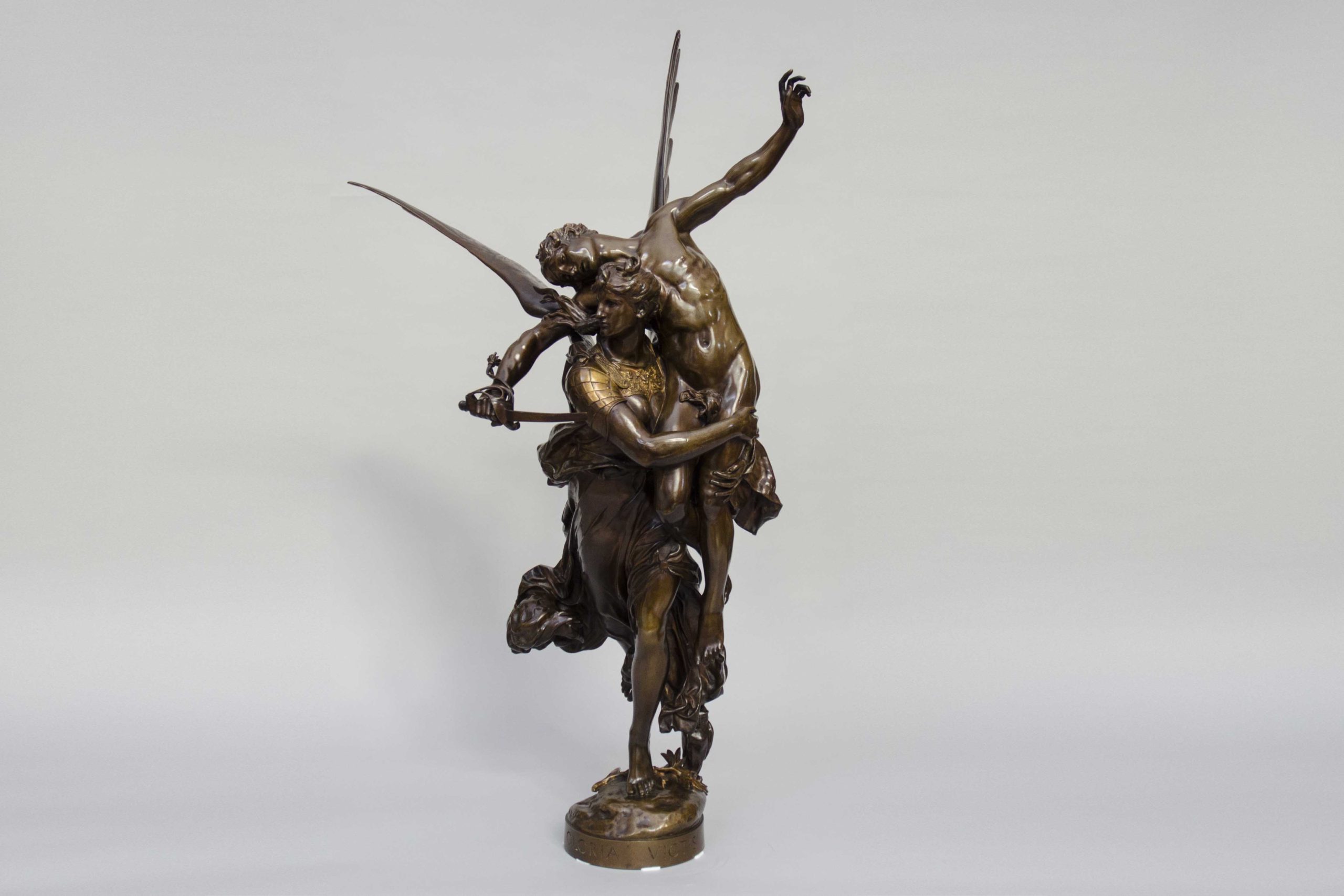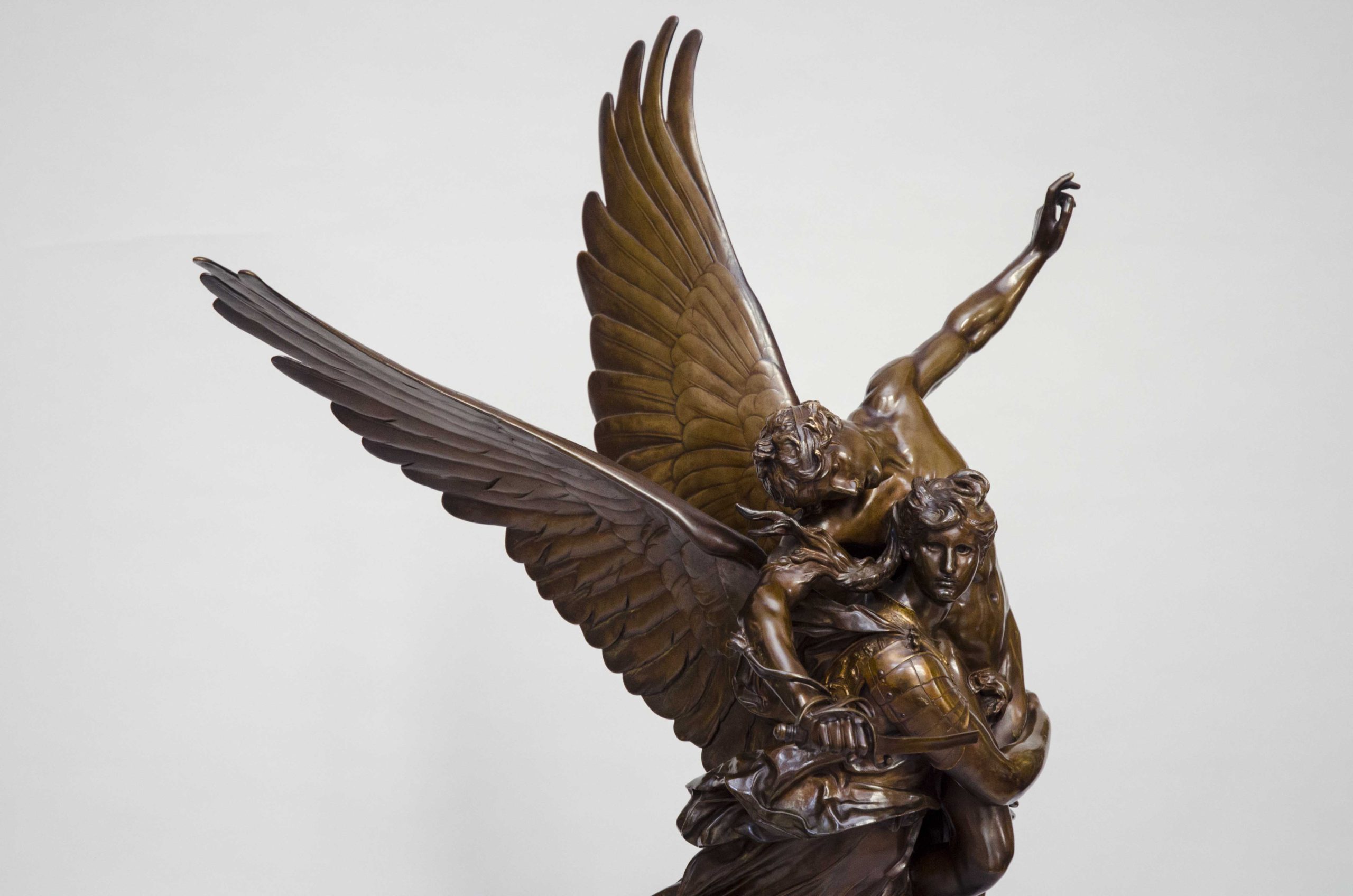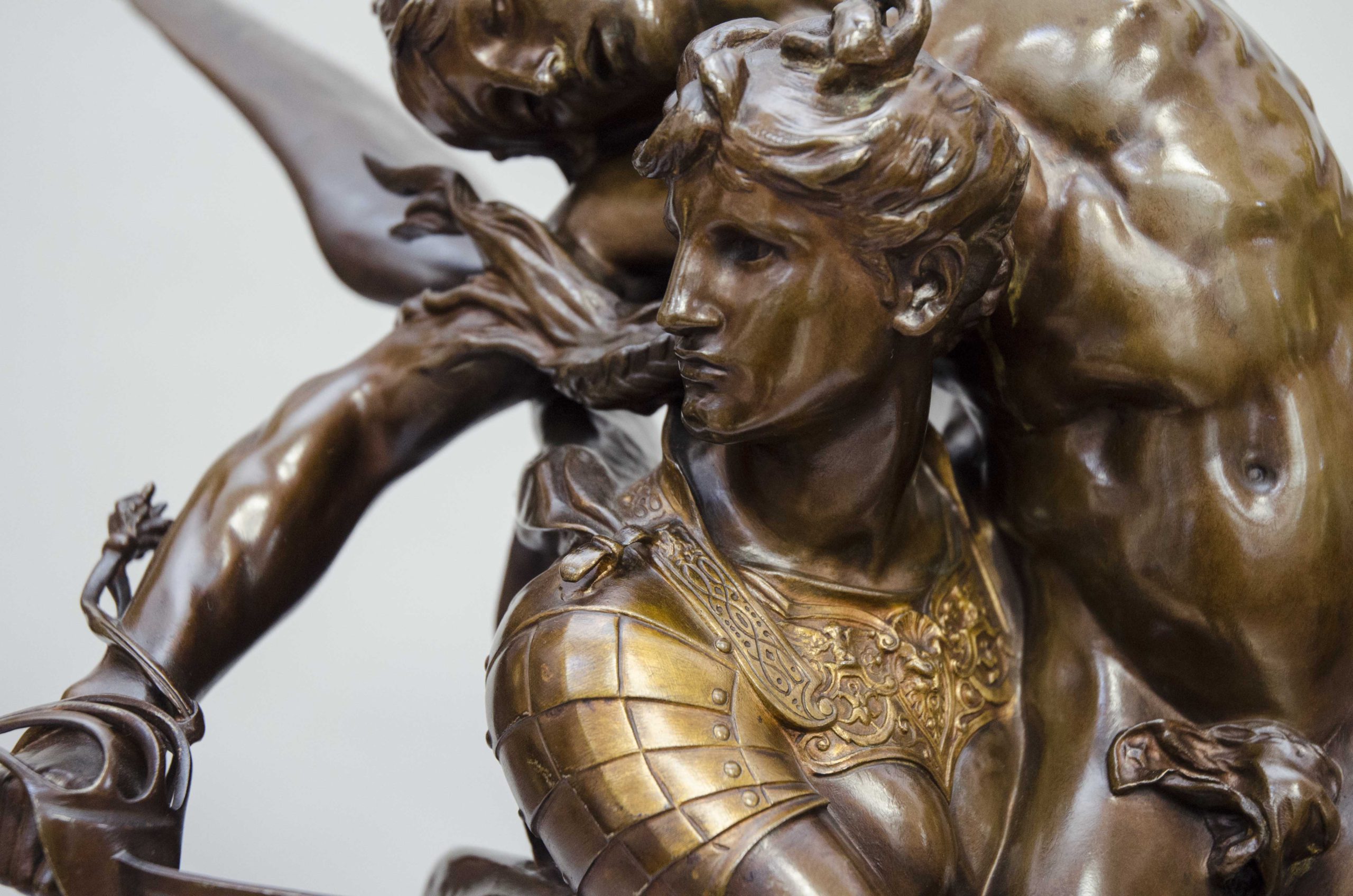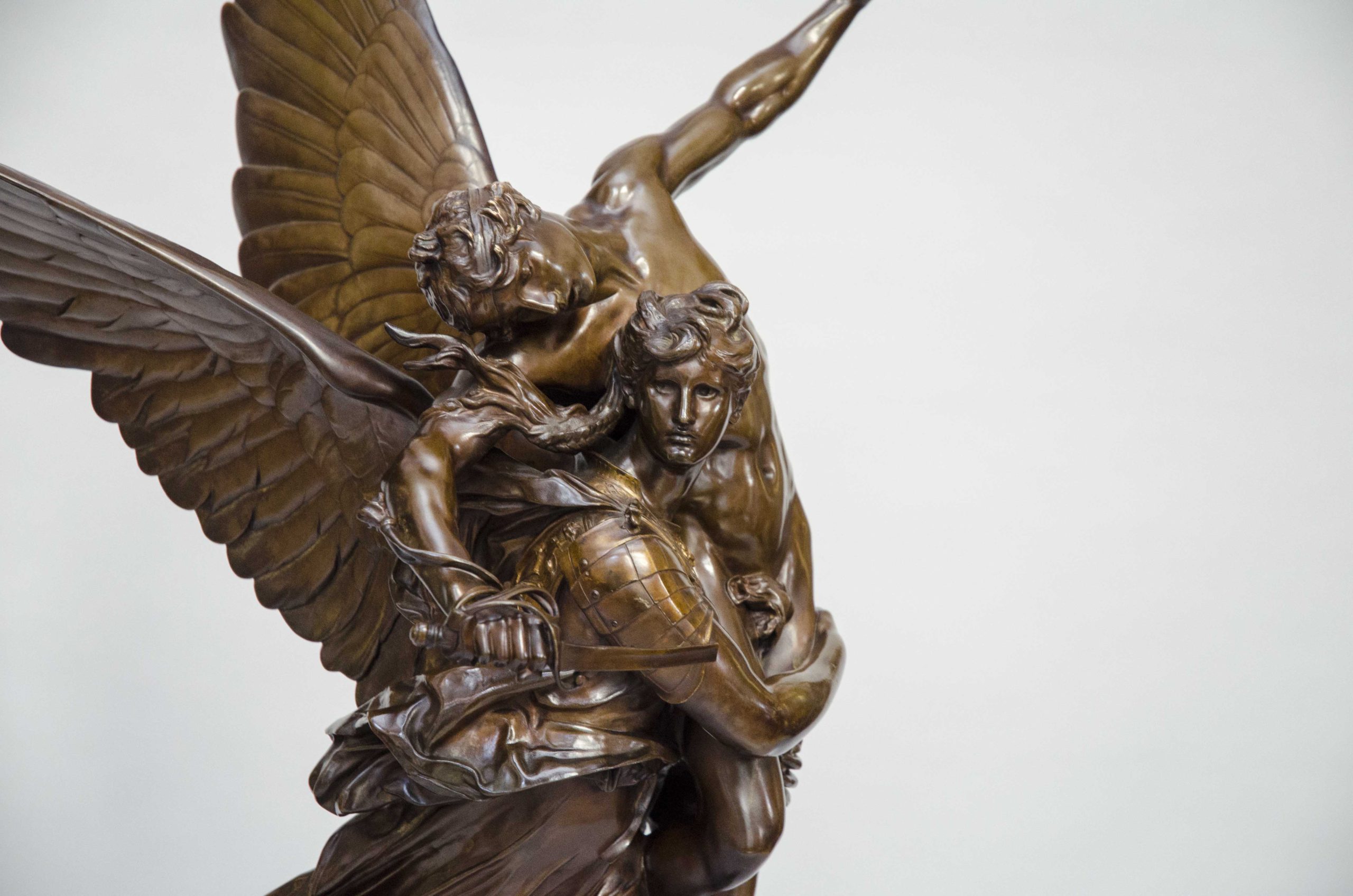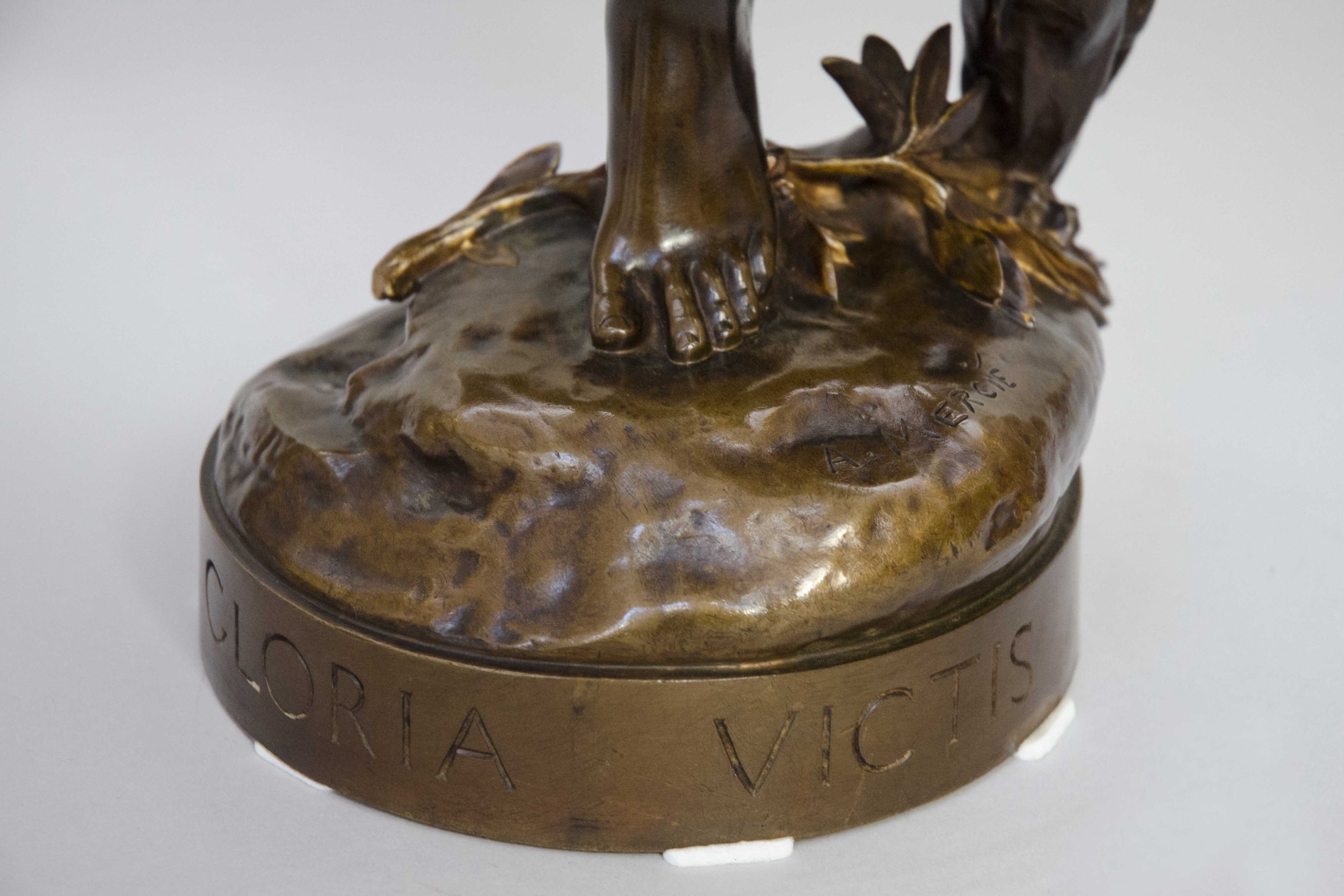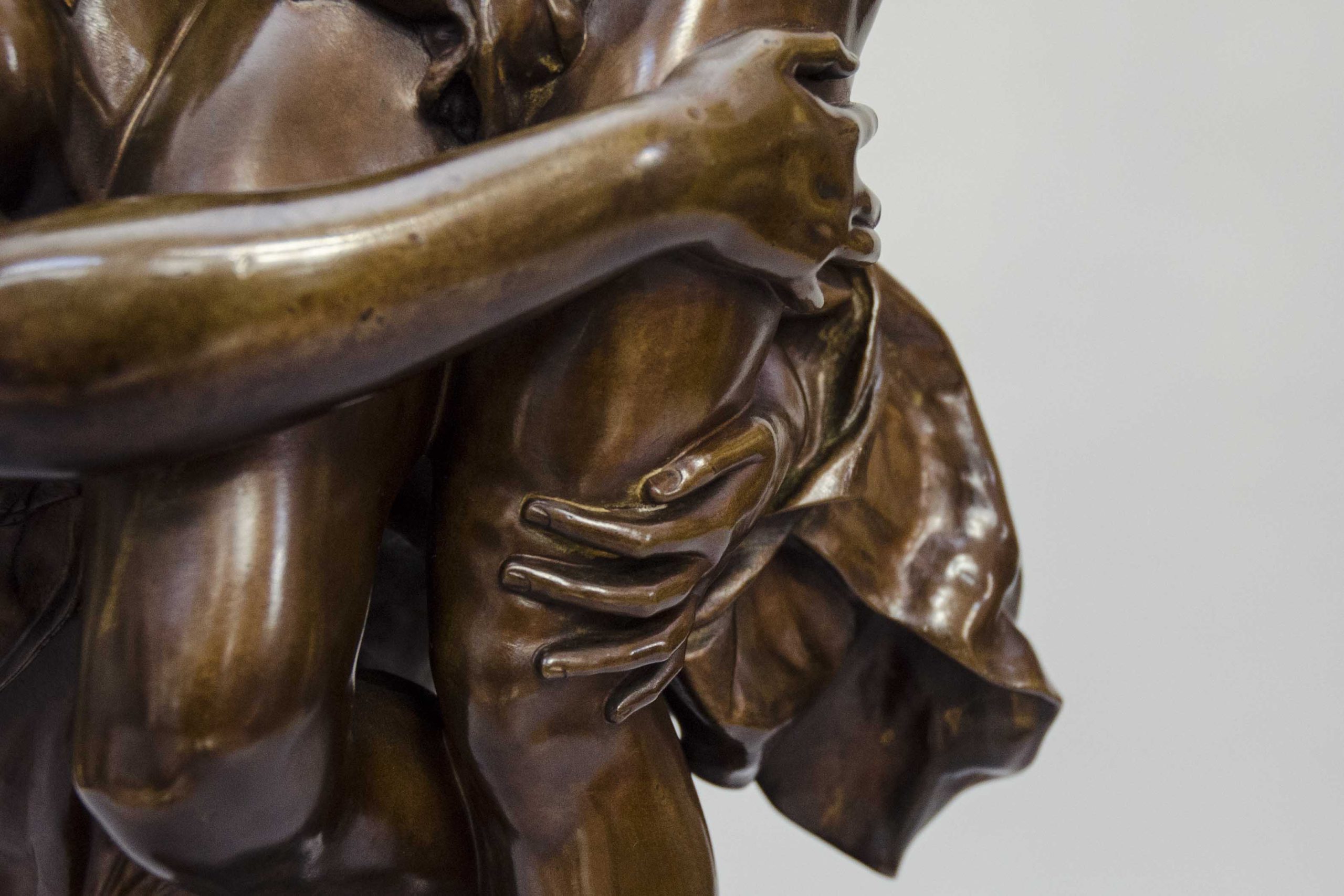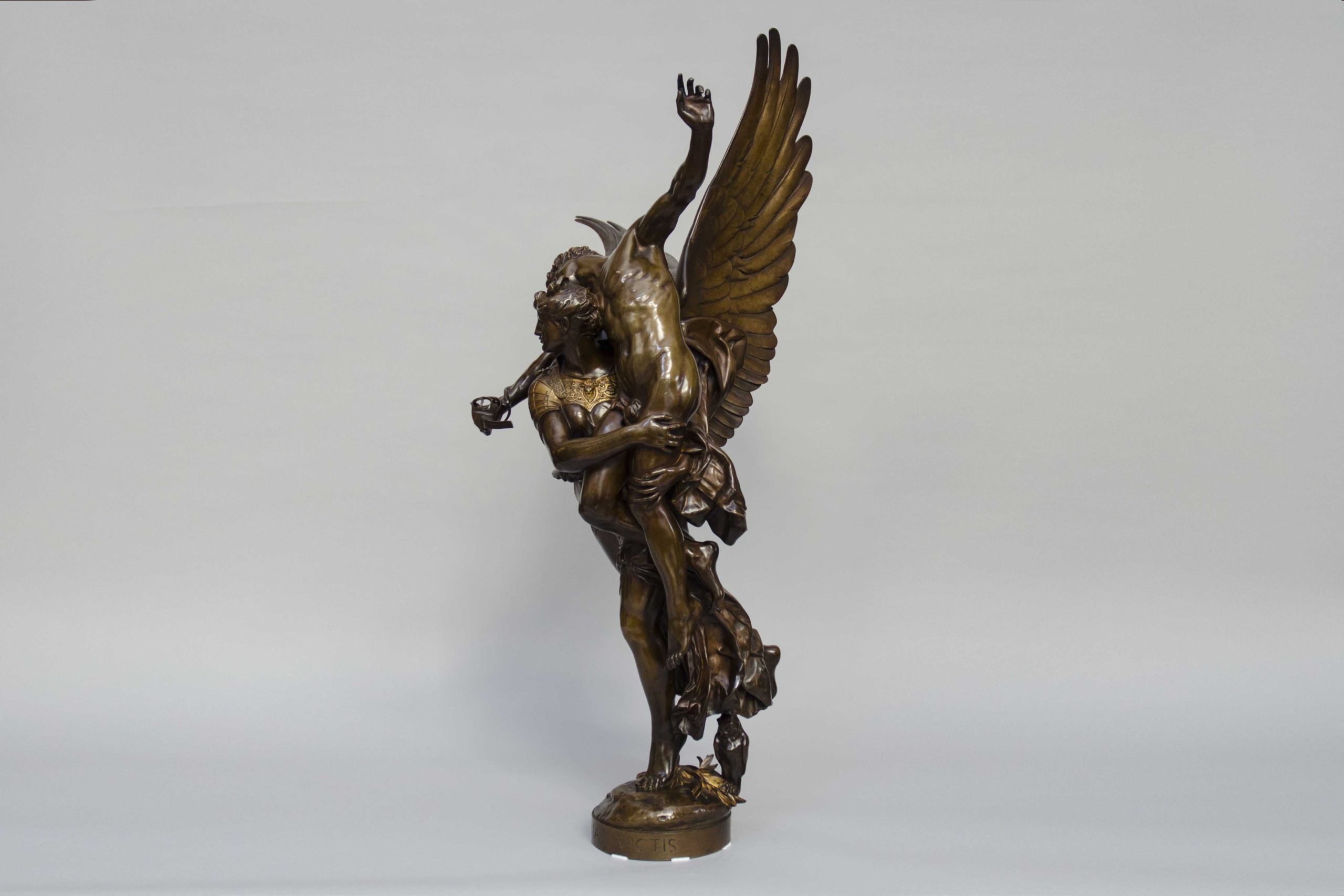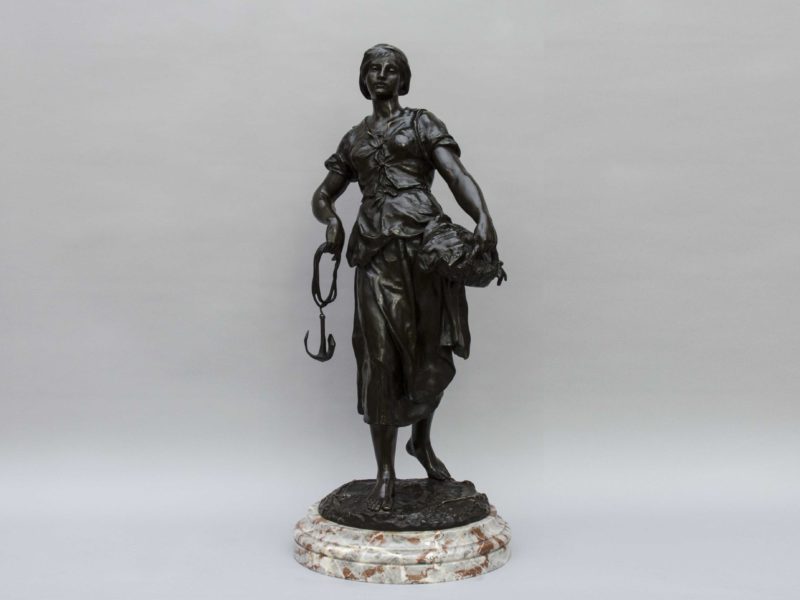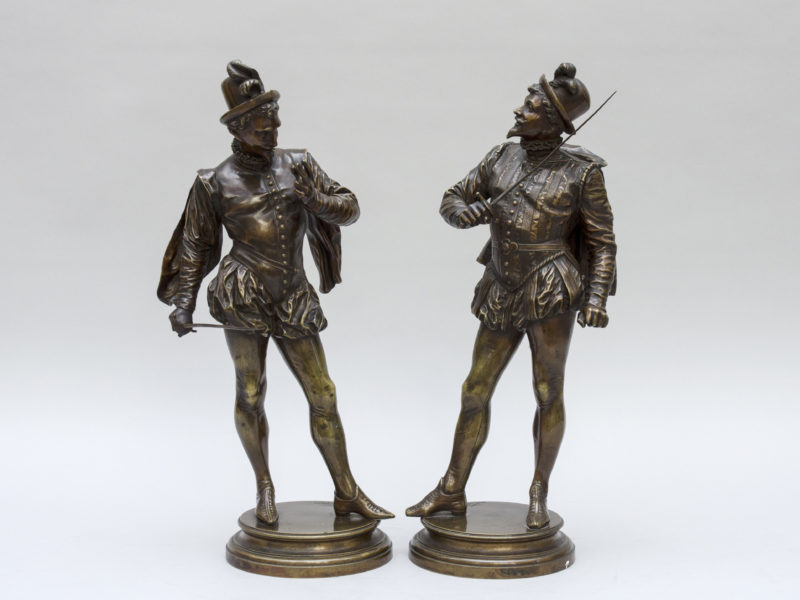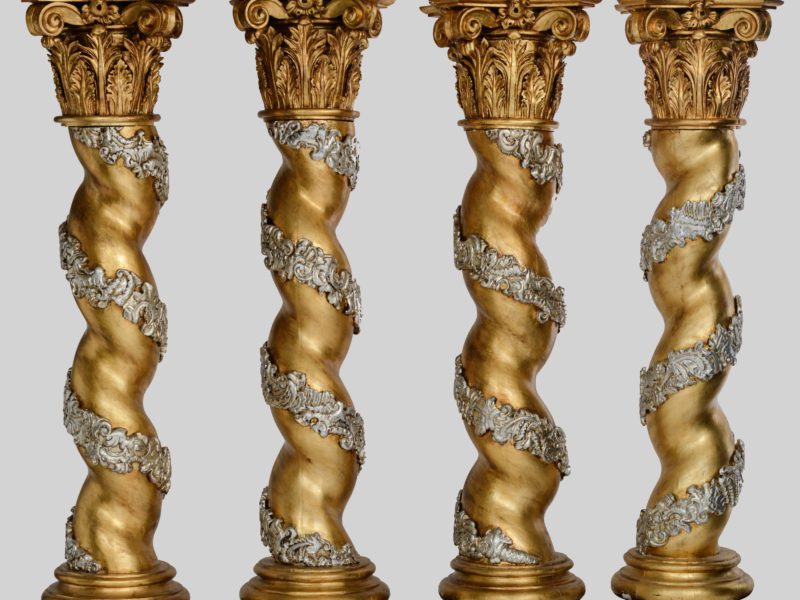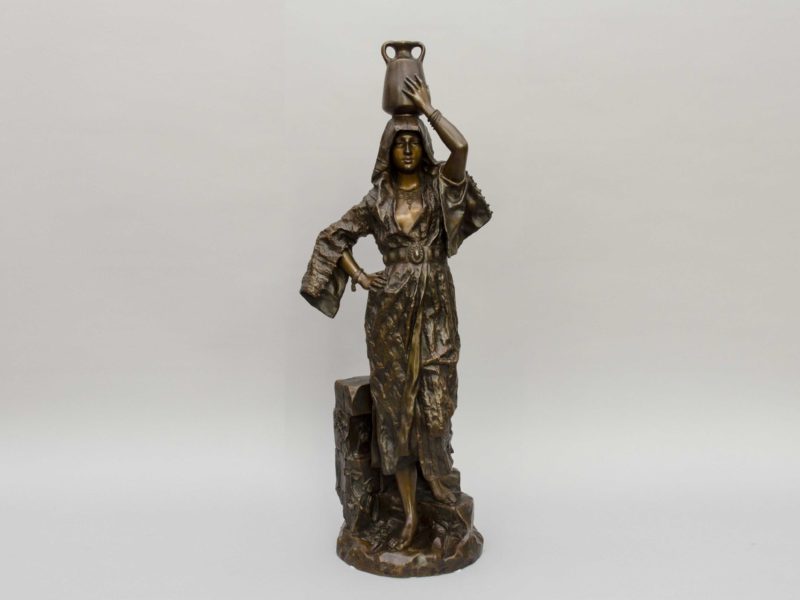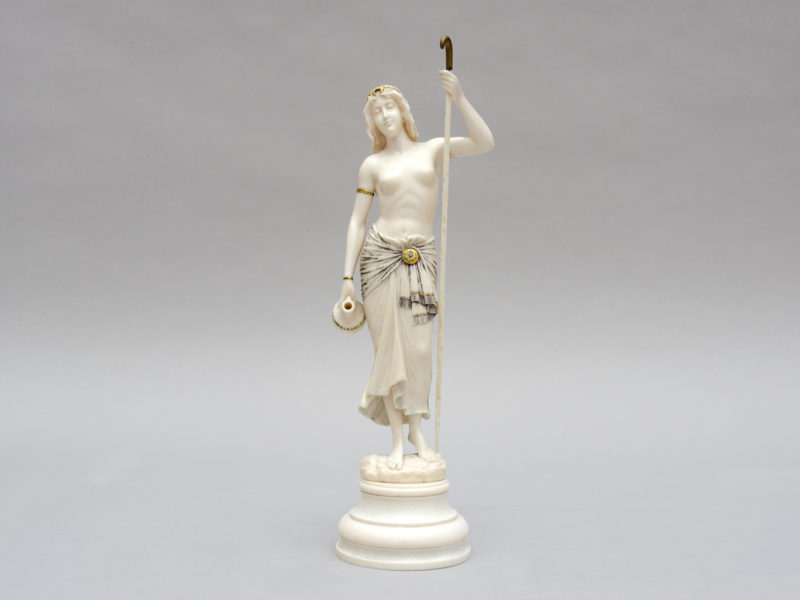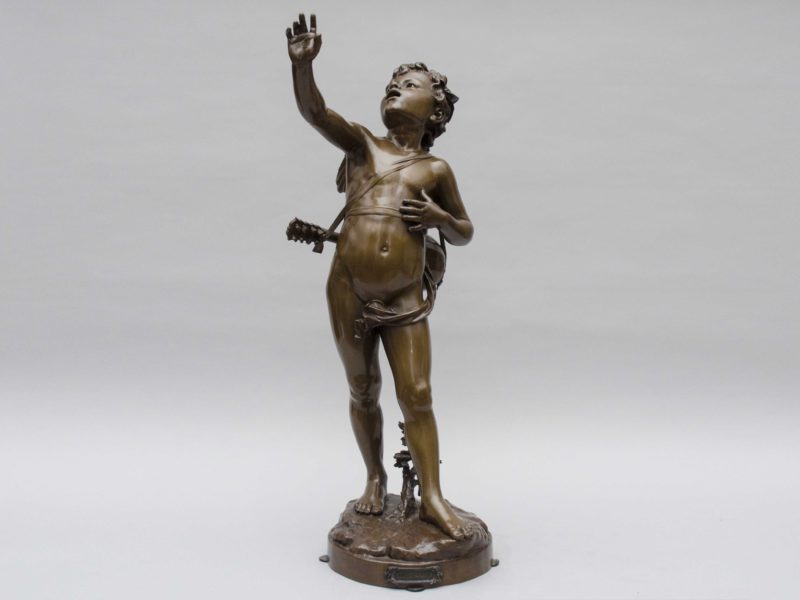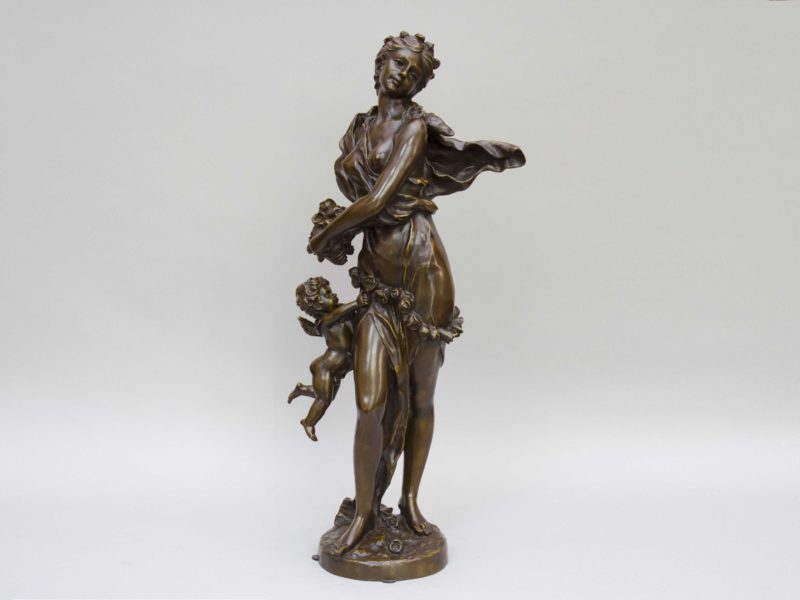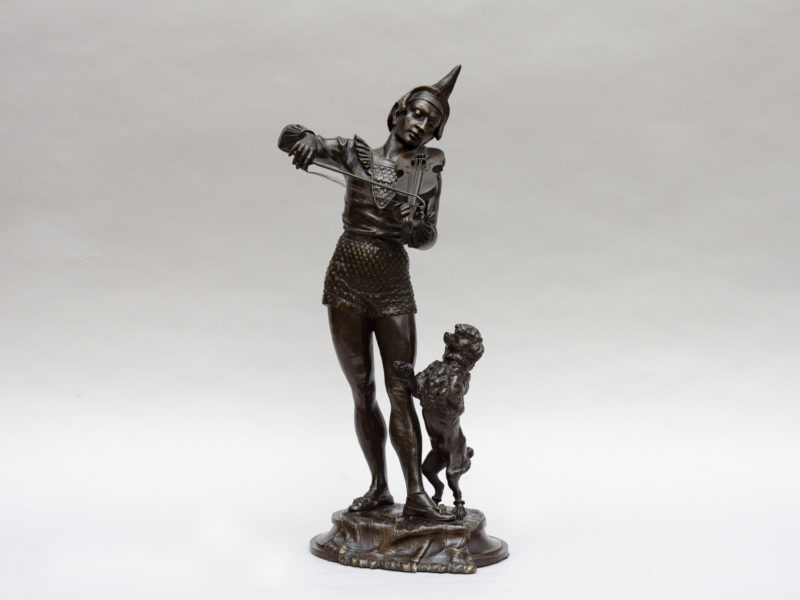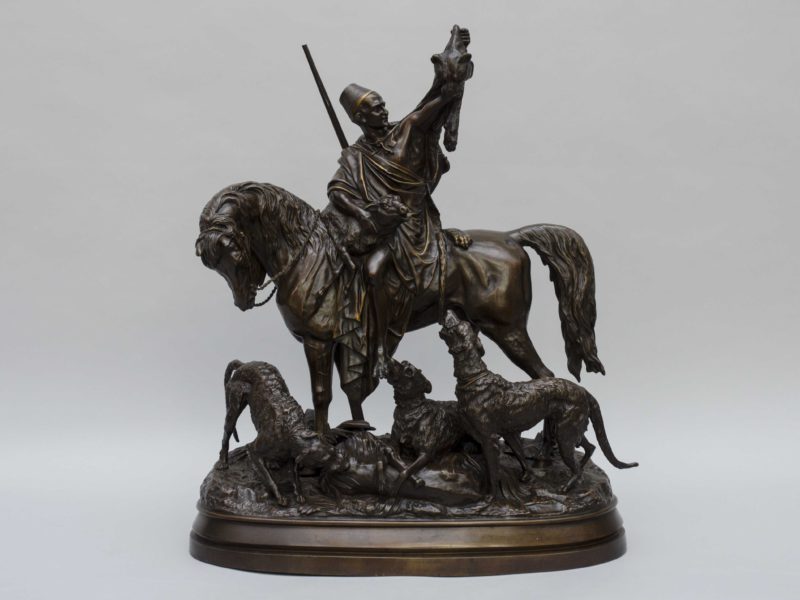
“Gloria Victis”, Mercié Marius-Jean-Antonin
Out of stock
“Gloria Victis”, bronze with brown & gold sheen. The Winged Victory carries the wounded young soldier in her arms, tenderly embracing his thighs as she supports his weight with her body. At Victory’s foot are a laurel branch and an owl ,symbol of wisdom. The detail of the work is elaborated, delicately realized such as the hands, the feet, the breastplate on the Winged Victory. Both of the figures have a neoclassical, idealized beauty.Signed on the terrace and marked for Barbedienne founder in Paris.
Size: H 93 cm
French school, circa 1874.
Littr. Mercié, a native of Toulouse, where he was born in 1845, studied sculpture at the prestigious Ecole des Beaux-Arts in Paris with François Jouffroy (1806-1882) and Alexandre Falguière (1831-1900). His Salon debut, with a modest portrait medallion of a young girl, took place the same year he won the “Prix de Rome” with his sculpture “Theseus and the Minotaur” in 1868. The youth’s envois immediately drew the honours launching an exceptional and prolific career for more than forty-six years, in which he will literally cover France with his monuments. His models for “David” and “Gloria Victis”, which he executed in Rome in 1869 and 1873, were critically acclaimed at the Salons of l872 and l874. While still a student at the French Academy in Rome, Mercié was awarded the Cross of the Legion of Honour, an award never given to a student before. “David” was purchased and cast in bronze for the prestigious national museum of living artists, the Musée du Luxembourg (now at the Musée d’Orsay, Paris). The influence of the Italian “QuattroCento” and Donatello, which is obvious in Mercie’s David, was part of a renewed interest in the 19th century in Florentine Renaissance sculpture.
His next envoi, the “Gloria Victis”, created a sensation from the very moment it appeared in Rome (exhibited as a life-size plaster model) and was immediately acquired by the city of Paris and executed in bronze. It is truly a magnificent example of 19th century French monumental public art.
The Gloria Victis provided the French with much-needed solace following their devastating loss of the Franco-Prussian War. In 1870, the Prussians invaded France (Mercié was a student in Rome at that time). Originally, Mercié sculpted a figure of Fame, or Winged Victory, carrying in glory a victorious soldier. Following the French army surrender, Mercié changed the figure of the exultant soldier to that of a defeated one – a broken sword still clutched in his hand. The title of the work, Gloria Victis, literally means “Glory to the Vanquished”. This patriotic message was no doubt a part in the overwhelming outpouring of public praise for this work. The bitterly defeated French found comfort in this portrayal of heroism in defeat. The young man portrayed in the work was a personal friend of Mercie’s and a fellow artist by the name of Henri Regnault. The patriotic Regnault (orientalist painter) was killed on the last day of the Franco-Prussian war while taking part in the defense of Paris.
Patriotism aside, at the time, it was considered to be daring compositionally. During the 1860s, several Salon sculptures addressed the formal problems of representing a figure balanced on one foot. The Gloria Victis demonstrates one-footed support for two figures. Because of this compositional element, Gloria Victis influenced numerous works including Rodin’s Call to Arms.
Mercie’s inspiration for the Gloria Victis was the “”Winged Victory of Samothrace which had been discovered on the Aegean Island of Samothrace in 1863 and sent immediately to the Louvre in Paris.
As prolific as he was popular with the public and with patrons, Mercié was much in demand as a monumental sculptor. He executed architectural decoration, such as the Genius of the Arts (c. 1877, bronze relief; facade of the Palais du Louvre, Paris) and Fame, the colossal gilt-bronze figure for the dome of the Palais du Trocadéro, also Paris (1878).
His sculpture won highest awards at the “Expositions Universelles” of 1878 and 1889. Mercié was elected in 1889 to the Institute de France, a success he followed in 1890 by becoming a professor at the Ecole des Beaux Arts and was then promoted to the rank of Grand Officer of the Legion of Honor. In 1913, he capped his achievements with election as president of the “Société des Artists Français”.
The following museums have a Gloria Victis bronze in their collections: Orsay, Châcons, Cherbourg, Petit Palais (Paris), Rouen, Toulouse, Berlin, Copenhagen, Bordeaux, Walsal (UK), Waschington DC, Santa Barbara, Dartmouth.
Out of stock
Contact us